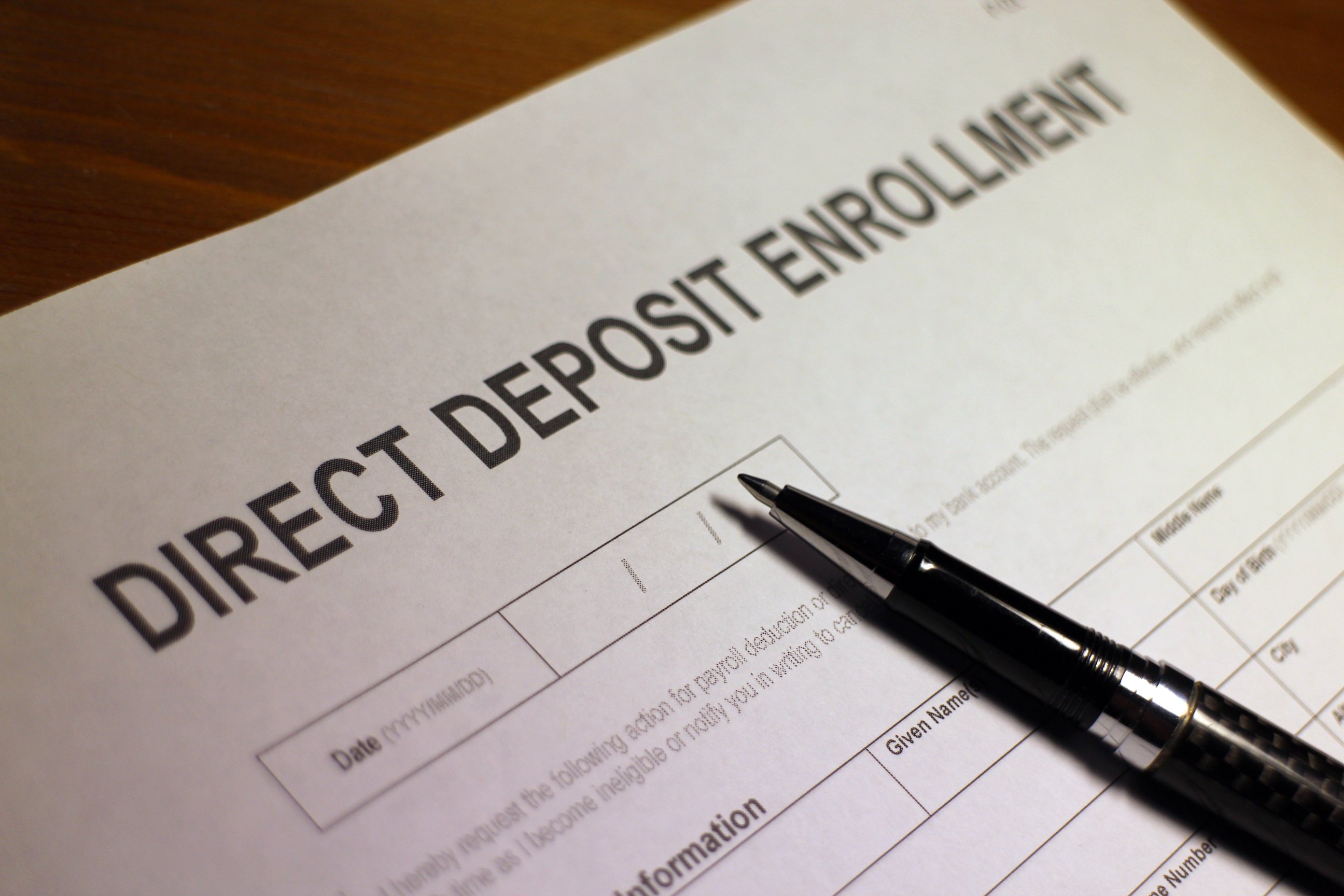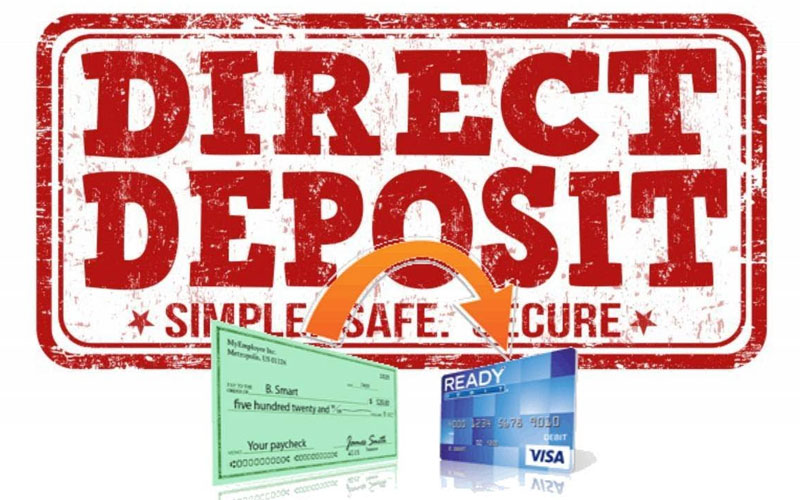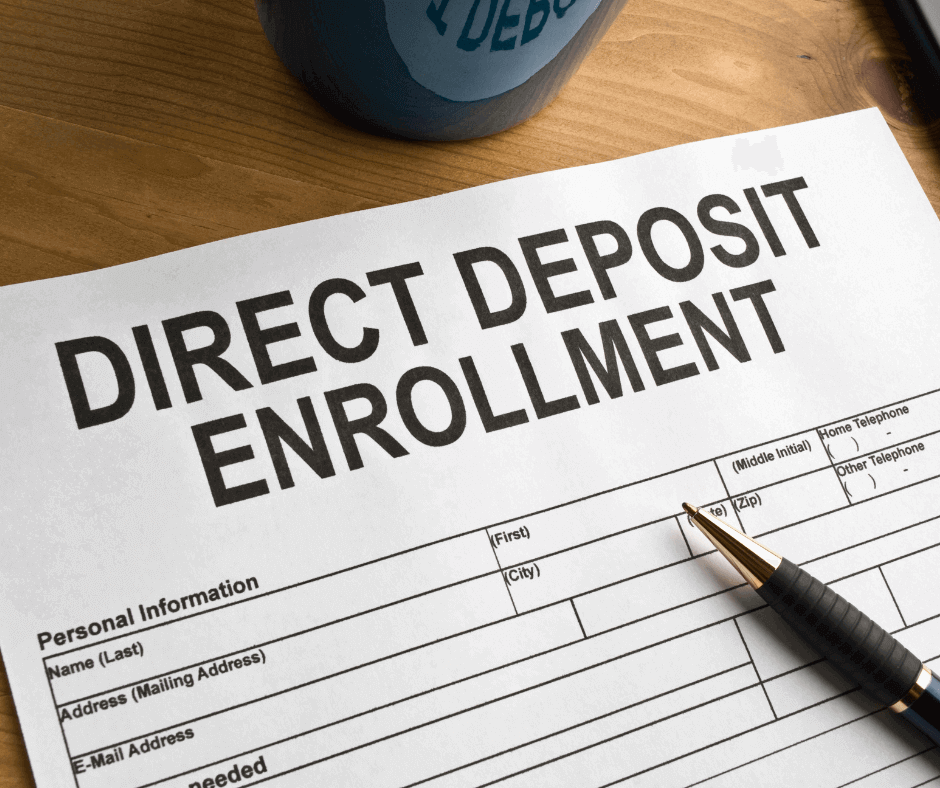What is a direct deposit branch?
A direct deposit branch is a financial institution that allows customers to deposit money directly into their bank accounts without having to visit a physical branch location. This can be done through a variety of methods, such as online banking, mobile banking, or ATMs.
Direct deposit branches offer a number of benefits to customers, including convenience, security, and speed. Convenience is key, as customers can deposit money into their accounts from anywhere with an internet connection or mobile device. Security is also important, as direct deposit eliminates the risk of losing or having checks stolen. Speed is another benefit, as direct deposits are typically processed much faster than traditional check deposits.
Direct deposit branches have become increasingly popular in recent years as more and more people are using electronic banking services. They offer a convenient, secure, and fast way to deposit money into bank accounts.
Here are some of the benefits of using a direct deposit branch:
- Convenience: Customers can deposit money into their accounts from anywhere with an internet connection or mobile device.
- Security: Direct deposit eliminates the risk of losing or having checks stolen.
- Speed: Direct deposits are typically processed much faster than traditional check deposits.
If you are looking for a convenient, secure, and fast way to deposit money into your bank account, then a direct deposit branch may be the right option for you.
Direct Deposit Branch
Direct deposit branches offer a convenient and secure way to deposit money into bank accounts. They are becoming increasingly popular as more and more people use electronic banking services.
- Convenience: Customers can deposit money into their accounts from anywhere with an internet connection or mobile device.
- Security: Direct deposit eliminates the risk of losing or having checks stolen.
- Speed: Direct deposits are typically processed much faster than traditional check deposits.
- Availability: Direct deposit branches are available at most banks and credit unions.
- Cost: Direct deposit is typically free of charge.
- Reliability: Direct deposit is a reliable way to deposit money into bank accounts.
- Efficiency: Direct deposit is an efficient way to deposit money into bank accounts.
These key aspects make direct deposit branches an attractive option for people who want a convenient, secure, and fast way to deposit money into their bank accounts.
1. Convenience
Direct deposit branches offer a convenient way to deposit money into bank accounts. Customers can deposit money from anywhere with an internet connection or mobile device, making it a convenient option for people who are always on the go or who do not have time to visit a physical branch location.
- Facet 1: Anytime, Anywhere Access
Direct deposit branches allow customers to deposit money into their accounts 24 hours a day, 7 days a week. This is a major convenience for people who work odd hours or who travel frequently. - Facet 2: No Need to Visit a Physical Branch
With direct deposit, customers can deposit money into their accounts without having to visit a physical branch location. This is a major convenience for people who live in rural areas or who do not have access to transportation. - Facet 3: Fast and Easy
Direct deposit is a fast and easy way to deposit money into bank accounts. Customers simply need to log into their online banking account or mobile banking app and follow the instructions. - Facet 4: Secure
Direct deposit is a secure way to deposit money into bank accounts. Customers do not have to worry about losing or having checks stolen.
The convenience of direct deposit branches makes them a popular option for people who want a fast, easy, and secure way to deposit money into their bank accounts.
2. Security
Direct deposit is a secure way to deposit money into bank accounts. Customers do not have to worry about losing or having checks stolen, which can be a major concern for people who frequently write checks.
- Facet 1: Reduced Risk of Theft
Direct deposit eliminates the risk of checks being stolen and cashed by unauthorized individuals. This is a major concern for people who frequently write checks, especially if they are mailed or left in unsecured locations. - Facet 2: Protection Against Fraud
Direct deposit is also protected against fraud. If a customer's account is compromised, the bank can quickly freeze the account and prevent unauthorized withdrawals. - Facet 3: Peace of Mind
Direct deposit gives customers peace of mind knowing that their money is safe and secure. They do not have to worry about losing checks or becoming victims of fraud.
The security of direct deposit is a major benefit for customers who want to protect their money and avoid the risks associated with writing checks.
3. Speed
Direct deposit branches offer a fast and efficient way to deposit money into bank accounts. Direct deposits are typically processed much faster than traditional check deposits, which can take several days to clear.
- Title of Facet 1: Immediate Availability of Funds
Direct deposits are typically credited to the recipient's account within 24 hours, making the funds immediately available for use. This is a major advantage for people who need to access their money quickly, such as for paying bills or making purchases.
- Title of Facet 2: Reduced Float Time
Direct deposits eliminate the float time associated with check deposits. Float time is the period of time between when a check is deposited and when the funds are actually available for use. With direct deposit, there is no float time, so the funds are available to the recipient immediately.
- Title of Facet 3: Improved Cash Flow
Direct deposit can help businesses improve their cash flow by reducing the amount of time it takes to collect payments. When customers pay by direct deposit, the funds are credited to the business's account immediately, which can help to improve cash flow and reduce the risk of late payments.
- Title of Facet 4: Increased Efficiency
Direct deposit is a more efficient way to deposit money than traditional check deposits. It eliminates the need to write checks, mail checks, and track check deposits. This can save businesses time and money, and it can also help to reduce errors.
The speed of direct deposits is a major benefit for both individuals and businesses. Direct deposit branches offer a fast, efficient, and secure way to deposit money into bank accounts.
4. Availability
The widespread availability of direct deposit branches at most banks and credit unions is a key factor in their popularity and accessibility. This means that consumers can easily find a direct deposit branch regardless of their location or financial institution.
- Title of Facet 1: Convenience and Accessibility
The availability of direct deposit branches at most banks and credit unions provides a convenient and accessible option for consumers to deposit money into their accounts. Customers can simply visit their local branch and deposit their funds, without having to worry about finding a specific direct deposit branch.
- Title of Facet 2: Expanded Reach
The widespread availability of direct deposit branches also expands the reach of direct deposit services to a wider range of consumers. This is especially beneficial for consumers who live in rural or underserved areas, where access to financial services may be limited.
- Title of Facet 3: Increased Competition
The availability of direct deposit branches at multiple banks and credit unions increases competition among financial institutions. This competition can lead to better rates and services for consumers, as banks and credit unions compete to attract and retain customers.
- Title of Facet 4: Financial Inclusion
The widespread availability of direct deposit branches also promotes financial inclusion by making it easier for unbanked and underbanked consumers to access financial services. Direct deposit can provide a safe and reliable way for these consumers to receive and manage their money.
In conclusion, the availability of direct deposit branches at most banks and credit unions is a major benefit for consumers. It provides convenience, accessibility, expanded reach, increased competition, and financial inclusion, making direct deposit a more attractive and viable option for a wider range of consumers.
5. Cost
The fact that direct deposit is typically free of charge is a significant advantage for both individuals and businesses. It eliminates the cost of checks, postage, and other expenses associated with traditional check deposits. This can save businesses money and help them to improve their bottom line.
For individuals, the cost savings of direct deposit can be significant. The average cost of a check is around $0.50, and this cost can add up over time. Direct deposit eliminates this cost, saving individuals money and making it easier to manage their finances.
In addition to the cost savings, direct deposit also offers a number of other benefits, including convenience, security, and speed. Direct deposit is a convenient way to deposit money into bank accounts, as it can be done from anywhere with an internet connection or mobile device. Direct deposit is also a secure way to deposit money, as it eliminates the risk of checks being lost or stolen. Finally, direct deposit is a fast way to deposit money, as funds are typically credited to the recipient's account within 24 hours.
Overall, the fact that direct deposit is typically free of charge is a major benefit for both individuals and businesses. It can save money, time, and hassle, and it can help to improve financial management.
6. Reliability
The reliability of direct deposit is a key factor in its widespread adoption and popularity. Direct deposit branches play a crucial role in ensuring this reliability by providing a secure and efficient infrastructure for processing direct deposit transactions.
Direct deposit branches utilize robust and secure systems to process direct deposit transactions. These systems employ multiple layers of security measures, including encryption, authentication protocols, and fraud detection mechanisms, to protect sensitive financial data and prevent unauthorized access or fraudulent activities.
Moreover, direct deposit branches adhere to strict regulations and compliance standards set by financial regulatory authorities. These regulations ensure that direct deposit transactions are processed accurately, timely, and in accordance with established industry best practices.
The reliability of direct deposit branches extends beyond the technical infrastructure and security measures. Direct deposit branches also maintain a high level of operational efficiency to ensure that direct deposit transactions are processed promptly and without errors. This operational efficiency is achieved through automation, streamlined processes, and a skilled workforce.
The reliability of direct deposit is essential for both individuals and businesses. Individuals rely on direct deposit to ensure that their paychecks, government benefits, and other payments are deposited into their bank accounts on time and without any issues. Businesses rely on direct deposit to ensure that their employees, contractors, and other payees receive their payments promptly and securely.
In conclusion, the reliability of direct deposit is a cornerstone of its success and widespread adoption. Direct deposit branches play a critical role in ensuring this reliability by providing a secure, efficient, and compliant infrastructure for processing direct deposit transactions.
7. Efficiency
Direct deposit branches play a vital role in ensuring the efficiency of direct deposit as a method of depositing money into bank accounts. They provide a streamlined and automated infrastructure that facilitates the quick and accurate processing of direct deposit transactions.
- Title of Facet 1: Automation and Streamlined Processes
Direct deposit branches utilize automated systems and streamlined processes to handle direct deposit transactions. This automation eliminates manual errors, reduces processing time, and increases overall efficiency. For example, direct deposit branches use electronic data interchange (EDI) to receive and process direct deposit files from employers and other payers, automating the data entry and validation process.
- Title of Facet 2: Centralized Processing and Data Management
Direct deposit branches act as centralized hubs for processing direct deposit transactions. They receive, validate, and process direct deposit files from multiple sources, ensuring consistency and accuracy in the handling of payments. This centralized approach streamlines data management and reduces the risk of errors or delays.
- Title of Facet 3: Integration with Banking Systems
Direct deposit branches are seamlessly integrated with the banking systems of participating financial institutions. This integration enables the direct and secure transfer of funds from the direct deposit branch to the recipient's bank account. The integration eliminates the need for manual reconciliation and reduces the risk of errors or delays in crediting the funds.
- Title of Facet 4: Reduced Paperwork and Administrative Burden
Direct deposit eliminates the need for paper checks and associated paperwork, such as check printing, mailing, and reconciliation. This reduces the administrative burden on both payers and recipients, freeing up time and resources that can be allocated to other tasks.
In conclusion, direct deposit branches are essential for ensuring the efficiency of direct deposit as a method of depositing money into bank accounts. They provide a streamlined and automated infrastructure that facilitates the quick, accurate, and secure processing of direct deposit transactions, reducing the risk of errors, delays, or administrative burdens.
Frequently Asked Questions about Direct Deposit Branches
Direct deposit branches are financial institutions that allow customers to deposit money directly into their bank accounts without having to visit a physical branch location. They offer a number of benefits, including convenience, security, and speed.
Question 1: What are the benefits of using a direct deposit branch?
Answer: Direct deposit branches offer a number of benefits, including convenience, security, and speed. Convenience is key, as customers can deposit money into their accounts from anywhere with an internet connection or mobile device. Security is also important, as direct deposit eliminates the risk of losing or having checks stolen. Speed is another benefit, as direct deposits are typically processed much faster than traditional check deposits.
Question 2: Are direct deposit branches safe?
Answer: Yes, direct deposit branches are safe. They use a variety of security measures to protect customer information, including encryption, authentication protocols, and fraud detection mechanisms.
Question 3: Are there any fees associated with using a direct deposit branch?
Answer: Typically, there are no fees associated with using a direct deposit branch. However, some banks may charge a small fee for expedited processing.
Question 4: How quickly are direct deposits processed?
Answer: Direct deposits are typically processed within 24 hours, although some banks may take longer.
Question 5: Can I use a direct deposit branch to deposit money into someone else's account?
Answer: Typically, you cannot use a direct deposit branch to deposit money into someone else's account. However, some banks may offer this service for a fee.
Summary of key takeaways or final thought: Direct deposit branches offer a convenient, secure, and fast way to deposit money into bank accounts. They are a good option for people who want to avoid the hassle of writing and mailing checks.
Transition to the next article section: Learn more about the benefits of using a direct deposit branch.
Conclusion on Direct Deposit Branch
Direct deposit branches have revolutionized the way people deposit money into their bank accounts. They offer a convenient, secure, and fast way to deposit money without having to visit a physical branch location. Direct deposit branches are becoming increasingly popular as more and more people use electronic banking services.
Key takeaways from this exploration of direct deposit branches include:
- Direct deposit branches offer a number of benefits, including convenience, security, and speed.
- Direct deposit branches are safe and use a variety of security measures to protect customer information.
- There are typically no fees associated with using a direct deposit branch.
- Direct deposits are typically processed within 24 hours.
- Direct deposit branches are a good option for people who want to avoid the hassle of writing and mailing checks.
As the world continues to move towards a more digital economy, direct deposit branches are likely to become even more popular. They offer a convenient, secure, and fast way to deposit money into bank accounts, and they can help people to save time and money.
Related Resources:



Detail Author:
- Name : Mitchell Anderson V
- Username : kevon80
- Email : clovis.breitenberg@hotmail.com
- Birthdate : 1974-12-28
- Address : 5109 Hill Shoal Lynchbury, OH 10785-9819
- Phone : +1 (951) 472-6692
- Company : Jacobs, Orn and Crist
- Job : Radio and Television Announcer
- Bio : Nesciunt tempore labore labore aliquid reiciendis vero. Ipsum et culpa assumenda inventore. Est blanditiis est sed voluptate.
Socials
linkedin:
- url : https://linkedin.com/in/murraye
- username : murraye
- bio : Illum et et tempora quisquam et.
- followers : 523
- following : 1379
twitter:
- url : https://twitter.com/emurray
- username : emurray
- bio : Molestiae ut rerum soluta beatae voluptatem et. Magni beatae velit blanditiis in animi esse. Aut tenetur dolores atque porro rem sed itaque et.
- followers : 1540
- following : 819
instagram:
- url : https://instagram.com/erica.murray
- username : erica.murray
- bio : Nemo reiciendis nihil ab. Saepe qui voluptatem et enim. Omnis eos ea vero soluta.
- followers : 5670
- following : 2383
facebook:
- url : https://facebook.com/erica1235
- username : erica1235
- bio : Cupiditate ex sed ab eos. Sunt iste ut nostrum voluptas aspernatur unde.
- followers : 4411
- following : 1955